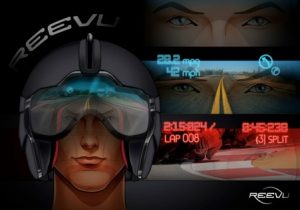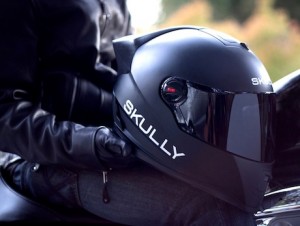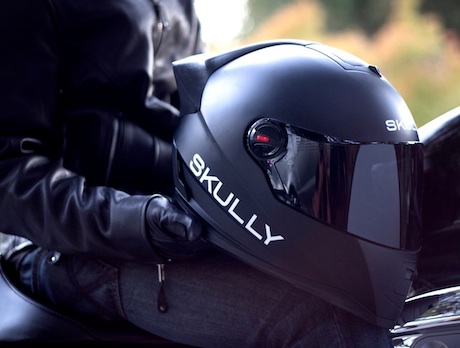http://www.youtube.com/watch?v=b7AYfq9uIY8
The next wave of motorcycle technology won’t have anything to do with your bike – it will all be in your head as motorcycle helmets become the new frontier for technology, dominated by Head-Up Display (HUD).

They use Bluetooth, GPS and apps to provide information that is transmitted to the rider via inboard speakers and a HUD of information on the helmet visor.
Reading information to the rider can already be done via a Bluetooth connection to a smartphone. Some Bluetooth devices such as Interphone’s new F5XT even tell you who is calling and you can have text and email read to you and reply, all without having to take a hand off the bars or take your eyes off the road. They utilise smartphone voice-activation systems such as iPhone’s Siri which can even answer questions about the weather or where to eat in your area, or they can access GPS advice such as how to avoid traffic snarls and roadworks.
However, the new addition to this technology is the HUD system where an image – such as a GPS direction, speed, traffic reports or even a rearview camera screen – is focussed on the visor so that it looks like it is painted on the road in front of the rider. In the case of the Skully helmet, it is included in a small video screen in the bottom right or left of the visor which displays a camera’s view of the road behind you. Either way, it means the rider does not have to focus or avert their eyes from the road ahead.
Riders will be able to tailor exactly what sort of information they want displayed. Some systems even promise to link with the bike instruments so you can chose to have things such as gear indicators and rev counters included in the display.

Some riders will embrace the new technology claiming it improves information supply to the rider in a safe manner. Critics may claim it is adding to rider distractions. And riding purists will claim it simply detracts from the Zen isolation experience of riding a motorcycle. However, the technology is not being forced on anyone and the rider can decide what they want. I’d love to try it. I’ve experienced HUD in luxury cars and it works so well you miss it when you return to a car without it.
But I can see one major drawback with HUD. Heat. In summer I like to ride with an open-face helmet or with the visor up and sunglasses on. In which case, the HUD is useless as it projects the image on to the visor.
I already use Bluetooth systems on various helmets, being able to answer and make phone calls on the run and listen to music and GPS voice directions, via the Siri voice-activated system. However, the big drawback here is the quality of the sound from the tiny, low-quality speakers. They can’t just stick in bigger speakers as they would be uncomfortable.

Now German hardware company Headway has invented a system where “good vibrations” turn the whole helmet into a speaker system. It is a device that attaches to the outside of the helmet and uses a magnetic mechanism to produce “surface transduction” which transmit vibrations through the helmet. Music is streamed to the system from a smartphone and controlled using an app, so no cables are involved.
Headway founder and CEO, and motorcycle fan, Sophie Willborn, says she was frustrated with the sound quality in her helmet and cumbersome cables and speakers. She says the new system ”turns the whole helmet into an acoustic resonating body with outstanding audio quality.”
“It’s like being in a soundbox. The whole helmet is the acoustic resonance body so you can hear the music from everywhere around you. The best thing is, you can feel the bass. The whole helmet vibrates when you hear music with strong bass.” She hopes to have the system available from the middle of 2014 for about $365.

What is needed is a helmet speaker system that takes out the background noise like the famous Bose noise-cancelling headphones. These don’t totally cancel outside noise, only constant ambient noise such as wind, engine and tyre noise. Sudden noises such as the screech of brakes, a car horn or emergency vehicle siren would still be audible. An Adelaide university professor was working on a noise-cancelling helmet system, but he has let the research lapse. Let’s hope someone works out how to reduce motorcycle background noise before we all go deaf!


